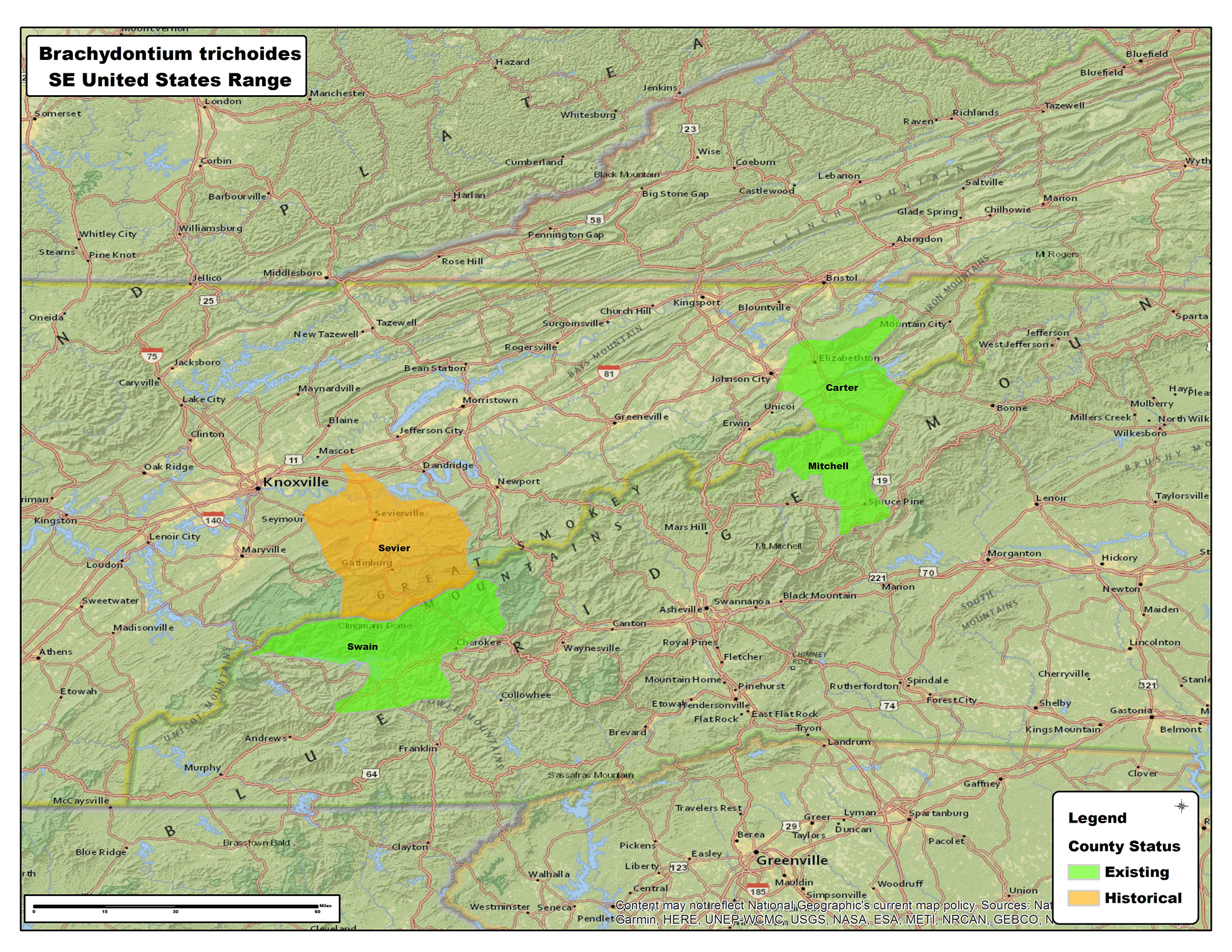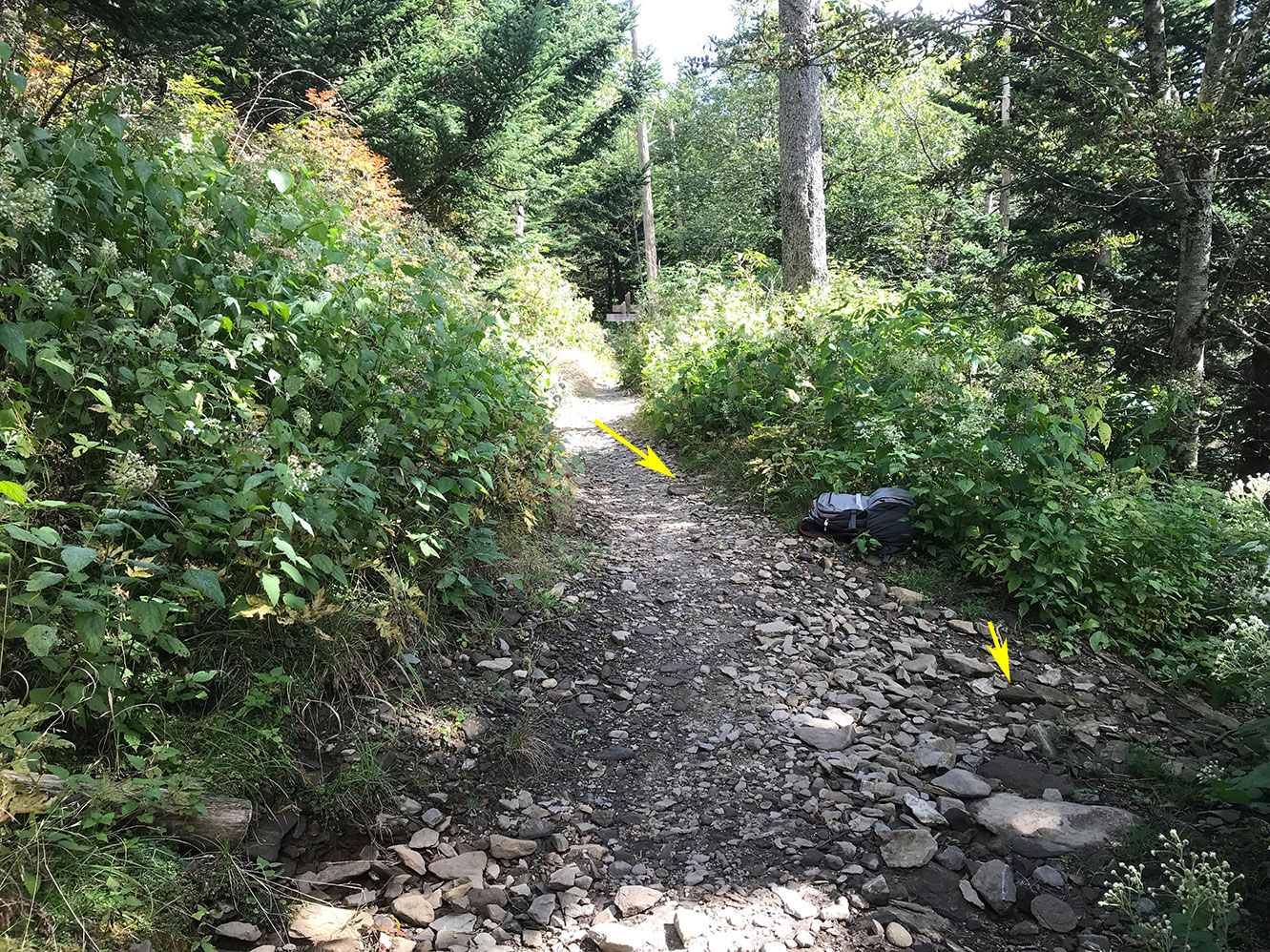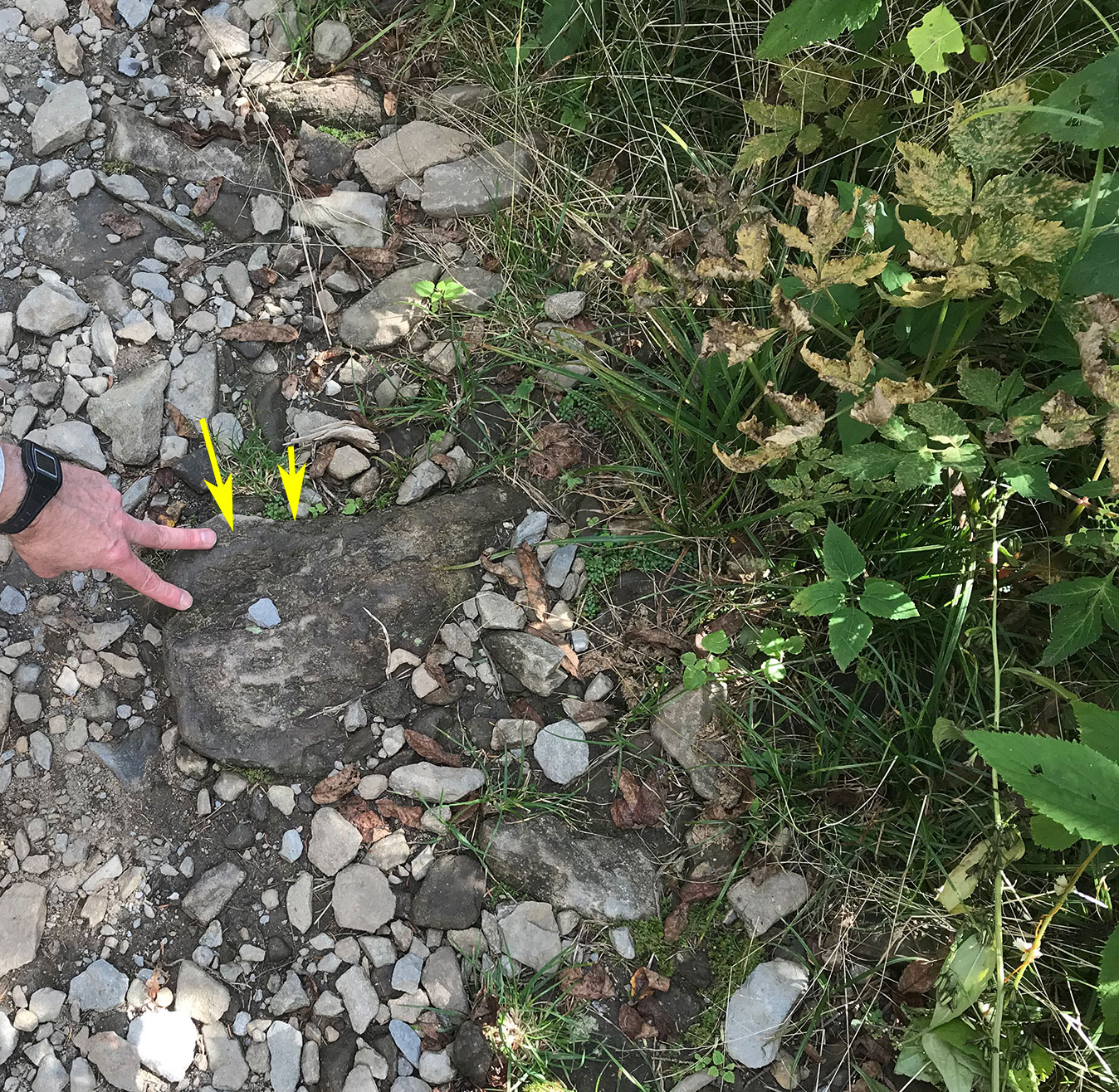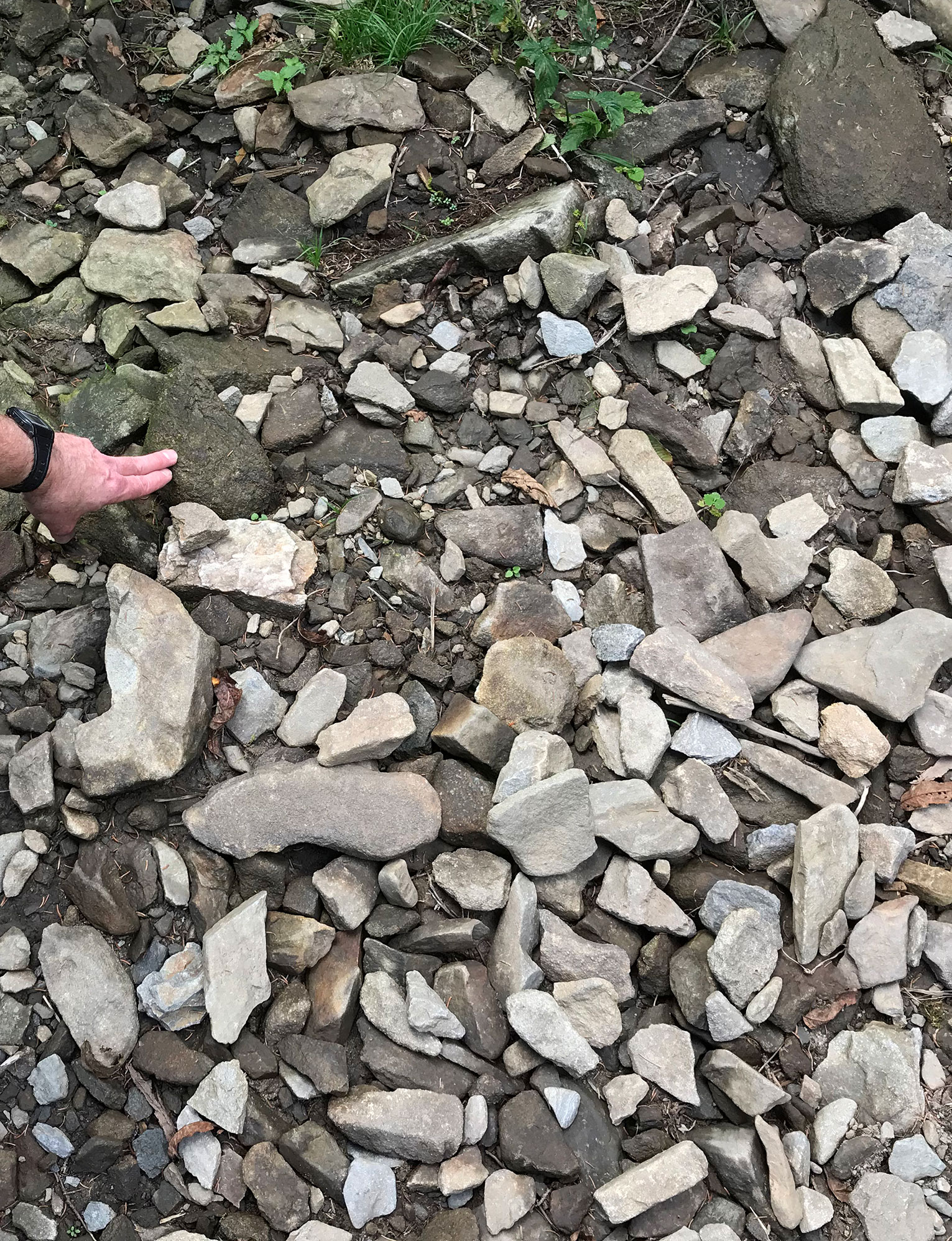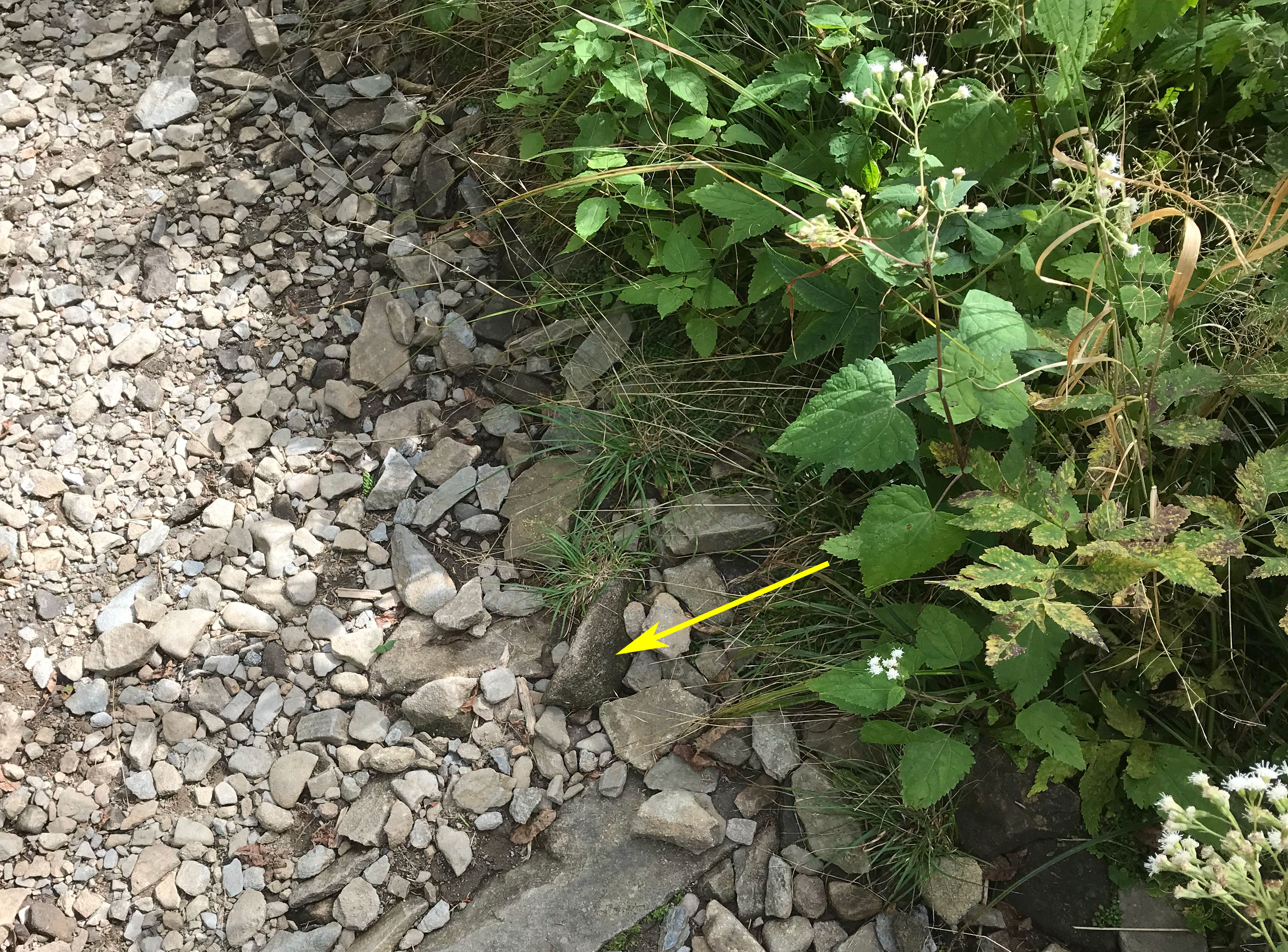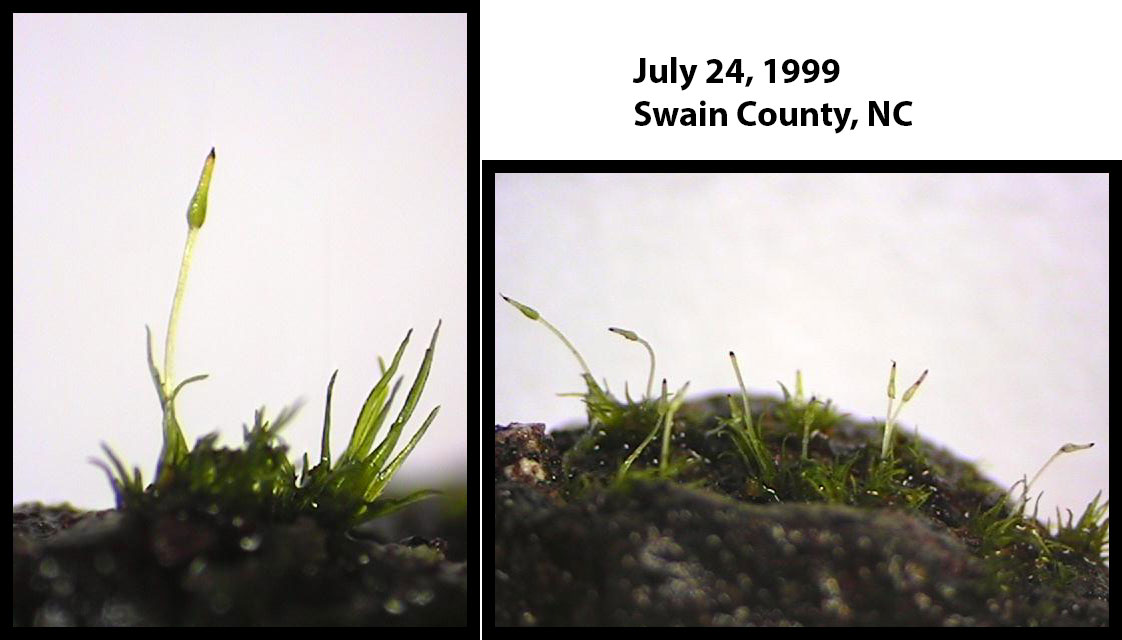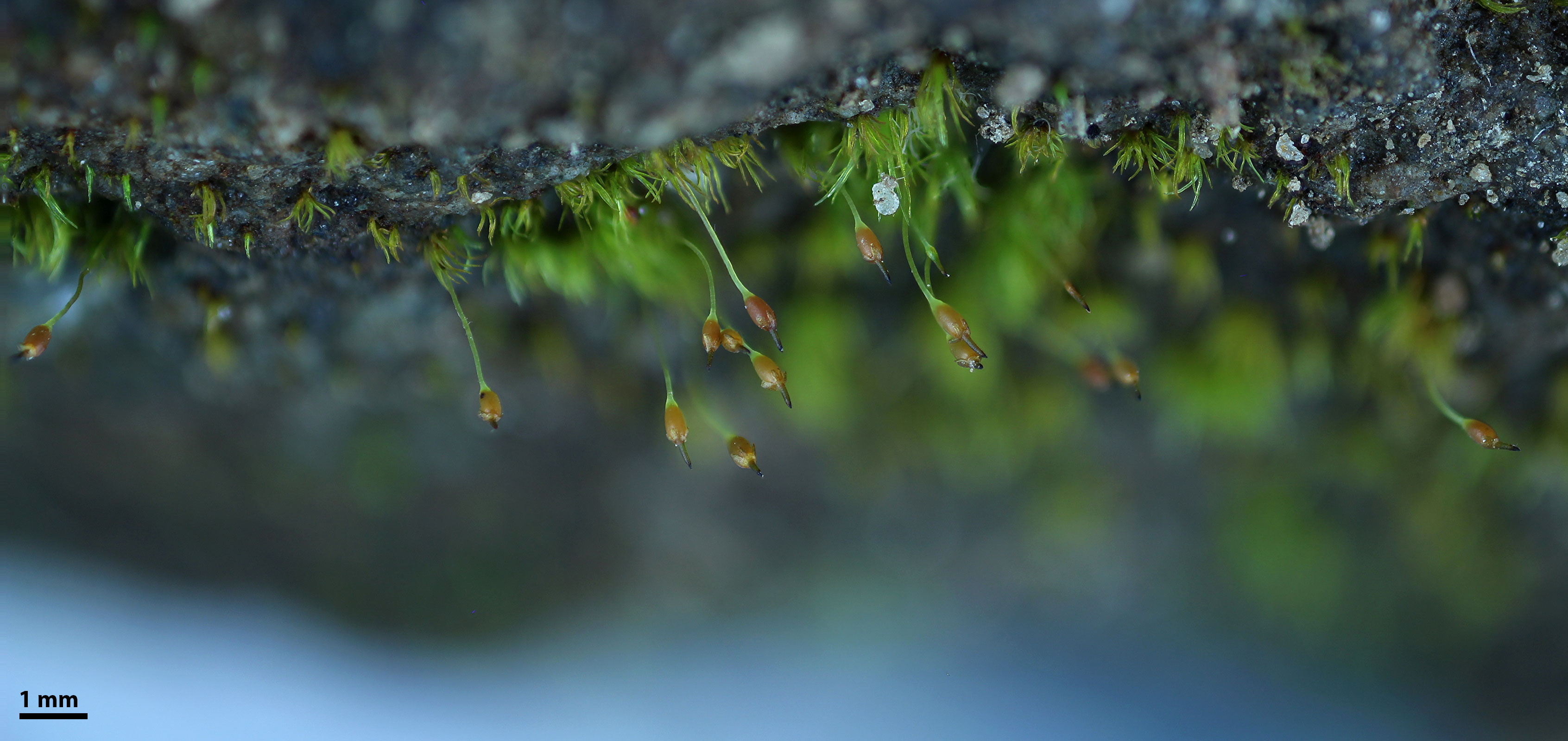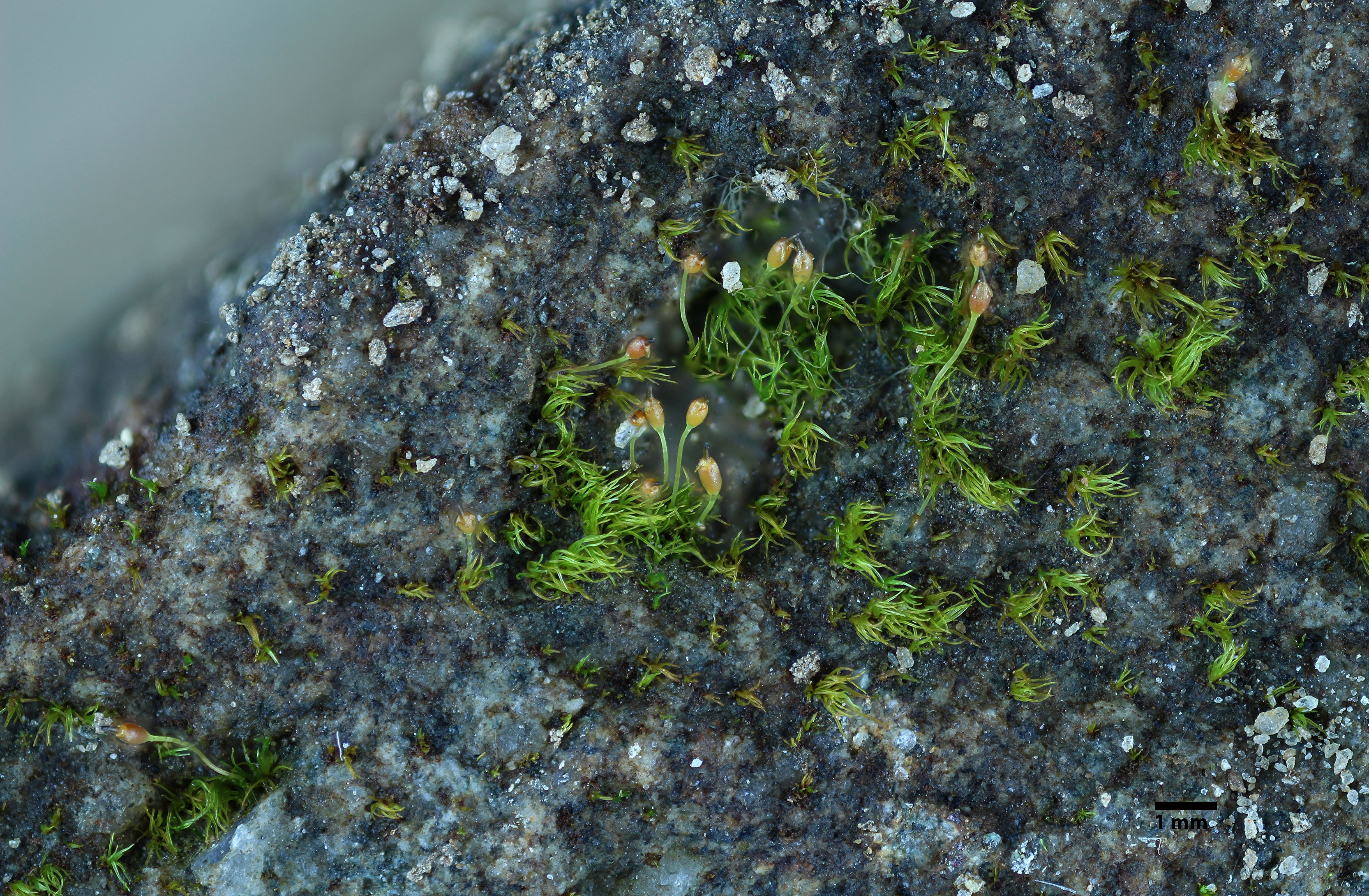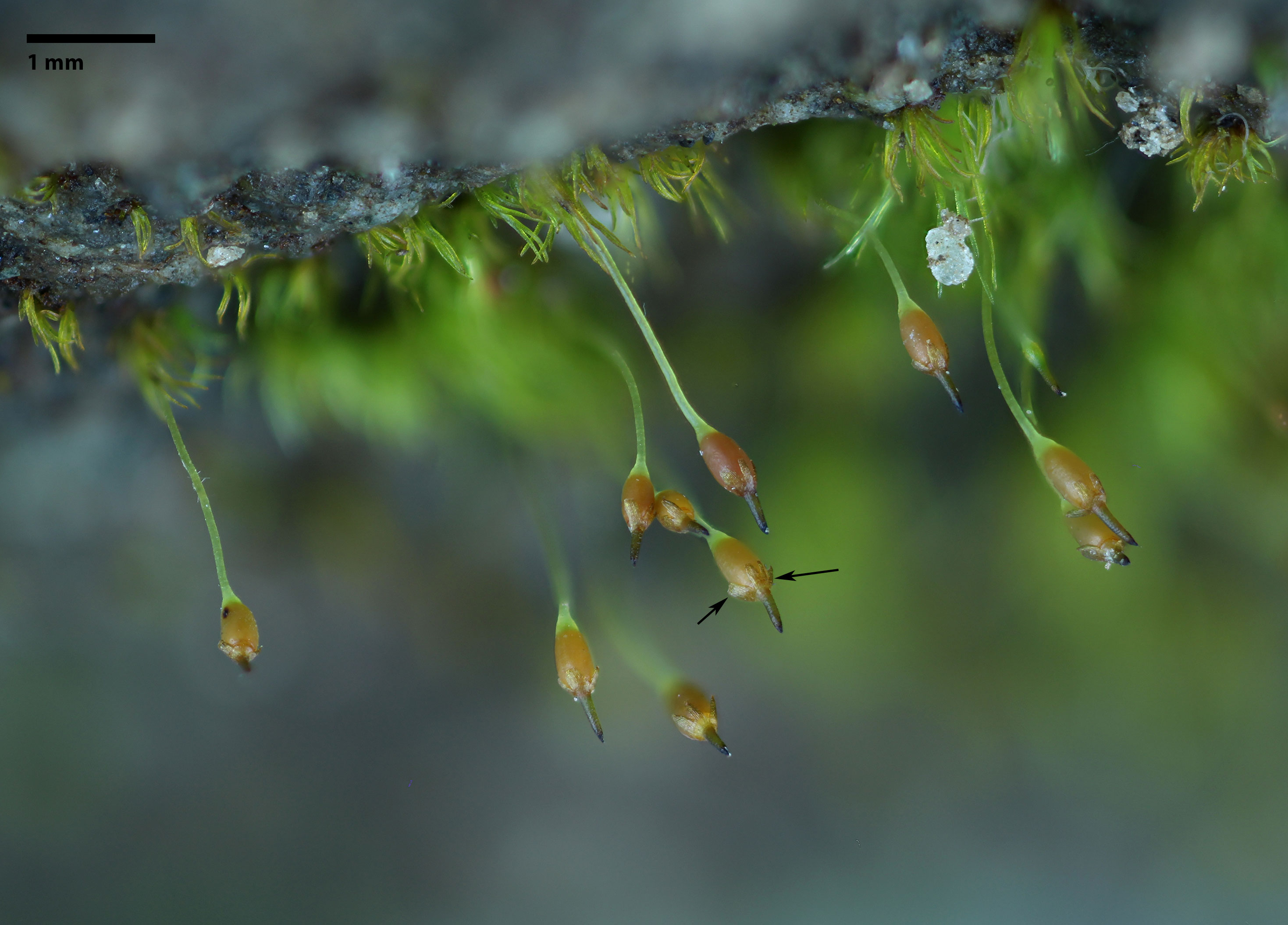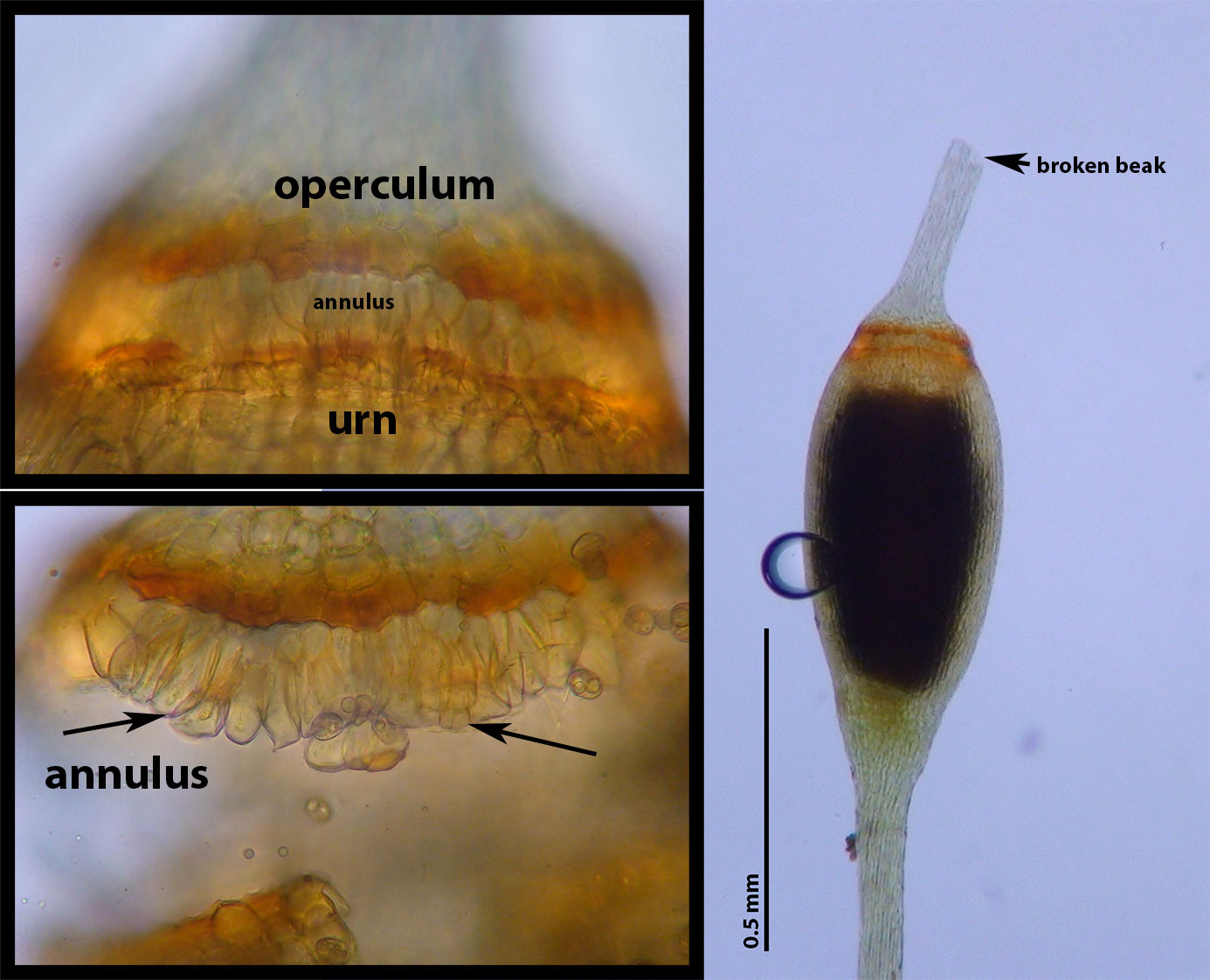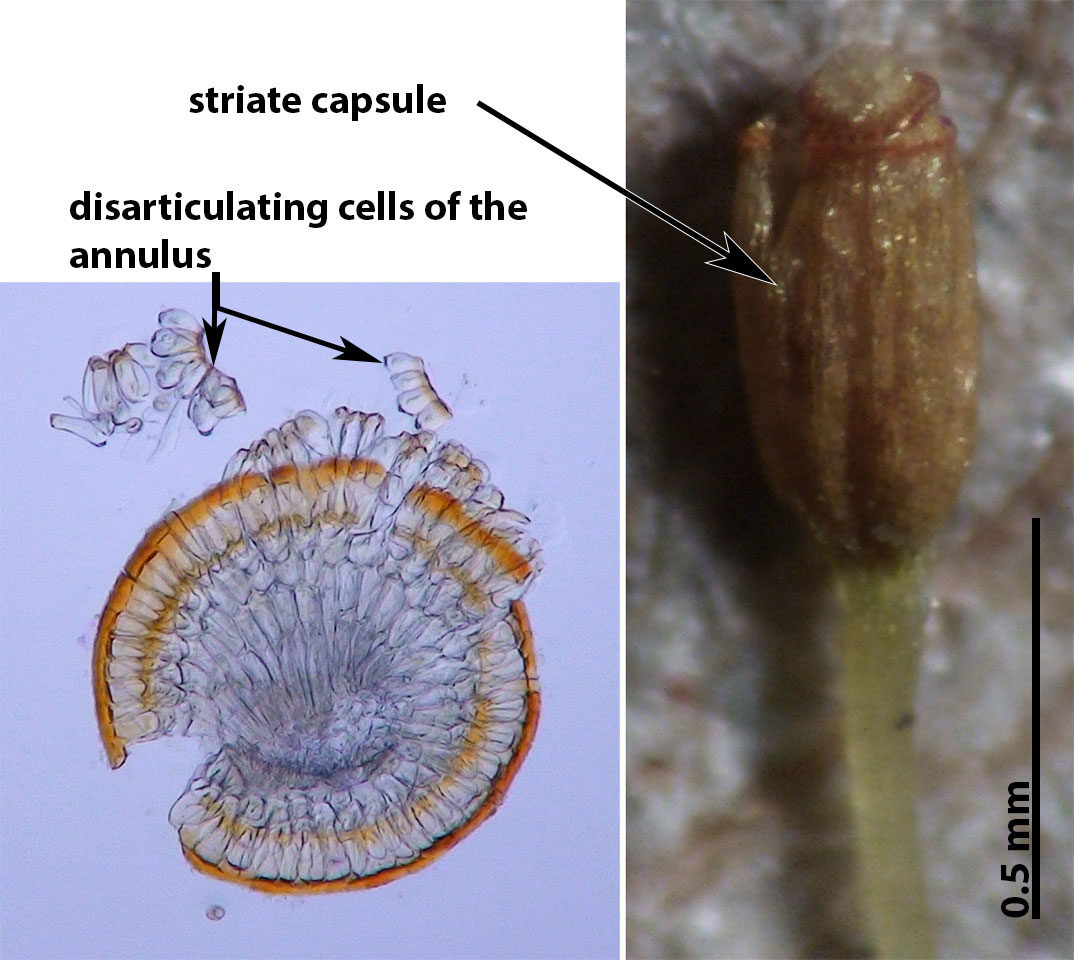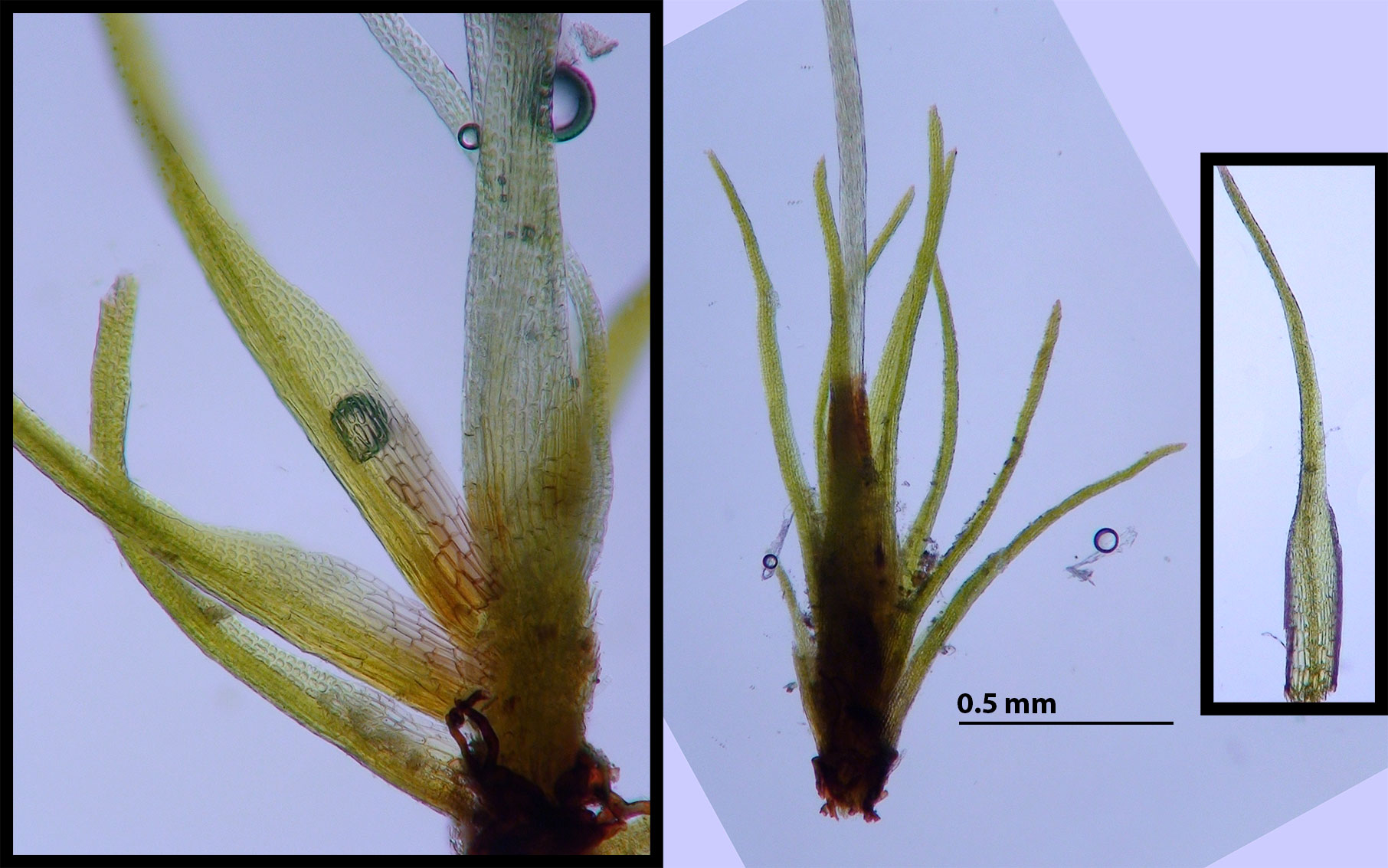Brachydontium trichodes (F. Weber) Fürnrohr
Family: Seligeriaceae
Synonyms
none recent
NatureServe Conservation Status
G2G4
Distribution
North America. U.S.A. (New Hampshire, North Carolina, Tennessee, Washington). South America. (Columbia). Europe, Asia, Australia (Vitt & Spence 2007).
Habitat
Moist acidic rock (often periodically dry in areas otherwise prone to seepage) at higher elevations, along trails and cliff faces. In the Southern Appalachians apparently restricted to elevations above 5000 ft.
Brief Description and Tips for Identification
Very small, 1-2 mm tall, to 5 mm tall including the sporophyte; gregarious acrocarp.
Monoicous. Capsule with beaked operculum separating from the urn by means of a well differentiated annulus. Calyptra mitrate. Mature capsules when dry striate (with longitudinal ridges), with 16 short peristome teeth, teeth papillose.
Seligeria is similar to Brachydontium in gametophytic characters (Crum and Anderson 1981) but differs in its strong preference for calcareous substrate, absence of well differentiated annulus, and a calyptra that is cucullate (split on one side) rather than mitrate.
A second species of Brachydontium, B. olympicum, occurs with B. trichodes on Mt. Rainier, Washington. It differs from B. trichodes in that it has no peristome. Sporophytic characters are required to identify species within the family Seligeriaceae (Vitt & Spence 2007).
Salient Features
- Leafy shoot 1-2 mm tall found on acidic rock
- Capsule with well developed annulus and 16 peristome teeth
- Calyptra mitrate
References
Crum, H. A., and L.E. Anderson (1981). Mosses of Eastern North America (Vol. 1). Columbia University Press
Vitt, D. H. and J. R. Spence. 2007. Brachydontium. Pages 327–328. In: Flora of North America Editorial Committee (eds.), Flora of North America North of Mexico, Volume 27. Oxford University Press, New York
